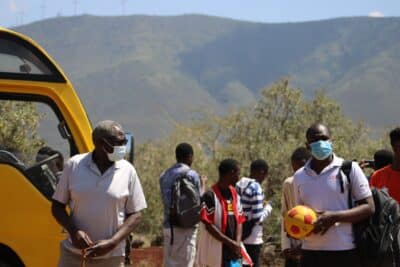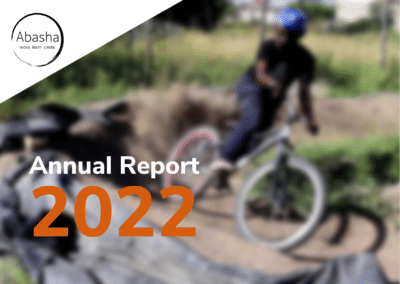Afghanistan is young: around two thirds of its population is under 25 years of age. Nevertheless, half of the children and young people in Afghanistan have no access to education. The UN children’s aid organisation UNICEF estimates that around 4 million children in Afghanistan do not attend school. Of these, 60% are girls. Adele Khodr, head of UNICEF Afghanistan, complains that if children do not go to school, they are in greater danger of being abused, exploited or recruited. How does one learn in a country torn by poverty and war, where girls are still oppressed and schools are bombed?

The Afghan education system
The Ministry of Education regulates and organizes the Afghan education system centrally for the entire country. There are four different areas of education in Afghanistan: General education with primary education and secondary education I and II, Islamic education, vocational training and higher education. After completion of Secondary Education I, students can choose between secondary school education or vocational training. Successful completion of Secondary Education II entitles the student to study at one of Afghanistan’s 31 universities.
Very little education for girls
Literacy rates among female Afghan youths are only about 18% – whereas the boys’ literacy rate is still extremely low at 51%, but well ahead of the girls. Girls are systematically excluded from educational opportunities in Afghanistan. More than half of all children who cannot enjoy an education are female, and in some regions almost 90% of girls do not attend school. Many families refuse to have their daughters taught by men for cultural and religious reasons and there is a severe shortage of female teachers throughout the country. During Taliban rule, education was reserved exclusively for boys. Although the situation for female students has improved somewhat since the fall of the Taliban, unfortunately, equal rights in education are still a long way off in Afghanistan.

Schools in crisis areas
Afghanistan lacks schools. About 70% of the educational facilities were completely destroyed during the war in Afghanistan. Currently, many schools are being rebuilt, but there is still a lack of educational facilities due to the inadequate infrastructure, especially in rural provinces. But even in the cities there is a lack of teaching materials, a stable power supply, sanitary facilities and – most importantly – qualified teachers. In recent years, thousands of schools have also been closed due to the deteriorating security situation. Over and over again, schools and other educational institutions become targets for attacks. Many families refuse their children to attend school, also for fear of attacks or kidnapping on the way to school.
A spark of hope
The literacy rate of girls and boys in Afghanistan has improved significantly in recent years compared to the last decades. Although the biggest hurdle in Afghanistan is still school enrollment, it is clear that most children who attend school actually finish it. Only about 10% of Afghan youths drop out of secondary school. For the graduates, this results in great opportunities on the international labour market. In 2018, the Afghan Government declared the year to be the “Year of Education” – a small glimmer of hope for the future of the Afghan education system and a sign that the government is finally taking this sector seriously.

Where to go from here?
To ensure that as many children as possible are enrolled in school in Afghanistan, it is important to create educational opportunities for a broad base. Small institutions, even in remote villages, make it easier for children to enter the education system and create a uniform level of knowledge – for girls as well. Afghanistan is also dependent on financial donations and donations in kind in the form of teaching materials and school equipment.
There is much hope for graduates who have studied in America or Europe and are now returning to Afghanistan. They should bring modern content and working methods to their home country. But in view of the conservative culture and lack of technical resources, this cannot be implemented as quickly as desired. The uncertainty among young people in the face of the threat of a division of power with the Taliban is high: there is a likelihood that the new government will ban girls from access to education, or at least limit it to primary school, as it did during the war. It is not yet possible to estimate exactly how big this likelihood is.
Help for Afghanistan's school children thanks to NGOs
Numerous international, but also national NGOs and associations have made it their business to help Afghanistan’s education system in view of the difficult conditions in the country. Together with PFO, a Kabul NGO, under which the well-known Drop and Ride project is also running, Abasha has already successfully implemented an English course in Kabul: Thanks to numerous supporters, we at Abasha were able to collect enough money at the end of 2019 to enable 20 Kabul youths between the ages of 14 and 24 to take this basic English course. PFO took care of hiring the teacher and selecting the students. The course will start in spring 2020 and will last three months; funding for the one-year extension of the course is already underway. We are proud to open a door to essential education for the children and young people of Kabul and the resulting international participation and emancipation through this offer.
You want to be a part of Abasha’s success story? We are happy about every new member who would like to support Abasha financially or even actively participate in our team. Become a supporting or full member now and make an important contribution to a more just world.
Sources:
Apell an Kriegsparteien – “Bildung in Afghanistan unter Beschuss”. (o.D.). Abgerufen am 17. März 2020 von https://www.dw.com/de/bildung-in-afghanistan-unter-beschuss/a-48919326
Fast die Hälfte der Kinder in Afghanistan geht nicht zur Schule. (2018, 3. Juni). Abgerufen am 17. März 2020 von https://www.unicef.de/informieren/
aktuelles/presse/2018/bildung-maedchen-in-afghanistan/166406
Gerner, M. Bildungssystem in Afghanistan – „Eine Machtteilung mit den Taliban würde das Rad zurückdrehen“. (o.D.). Abgerufen am 17. März 2020 von https://www.deutschlandfunk.de/
bildungssystem-in-afghanistan-eine-machtteilung-mit-den.680.de.html?dram:article_id=459015
KiTa.NRW. Hintergrundwissen für frühpädagogische Fachkräfte zu Herkunftsländern – Bildung in der Islamischen Republik Afghanistan. (o.D.). Aufgerufen von https://www.kita.nrw.de/file/1773/download?token=gsD_lW5x
Länderprofil Afghanistan. (o.D.). Abgerufen am 17. März 2020 von https://www.bq-portal.de/db/L%C3%A4nder-und-Berufsprofile/afghanistan



